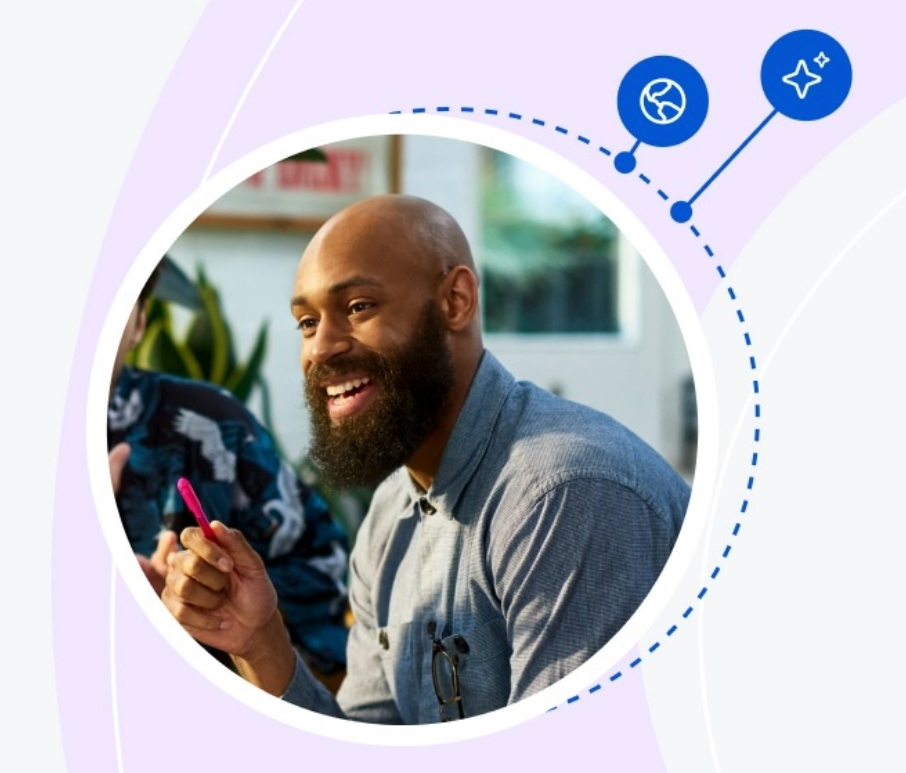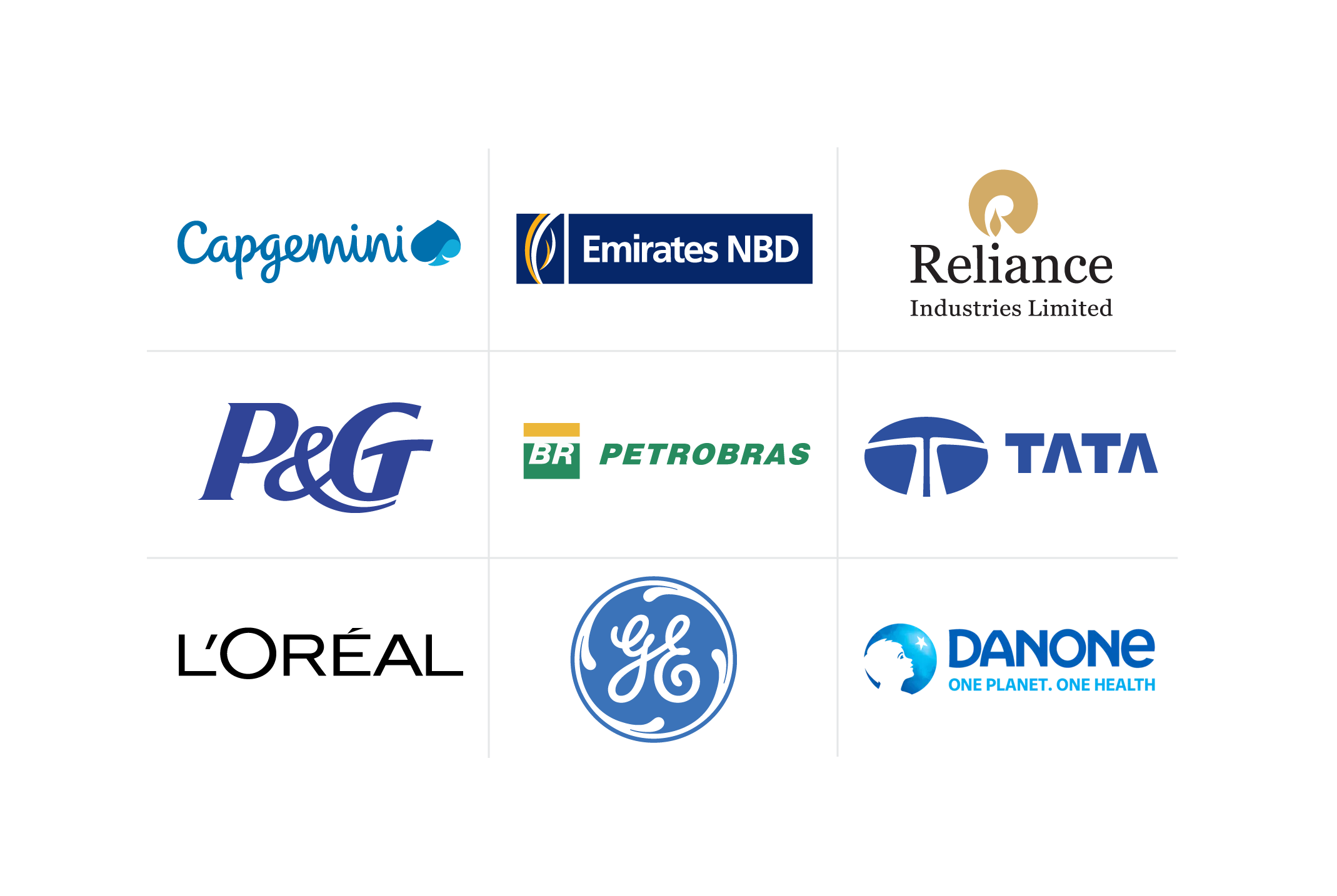Competency-Based Education: How to Elevate Corporate Learning
Competency-based education provides pathways for non-traditional learners to build competitive skills. By implementing this learning style within corporate environments, companies have the opportunity to upskill their workforce alongside day-to-day tasks.
![[Featured Image] Employees sitting at workstations with computers work on competency-based education exercises as an instructor helps.](https://d3njjcbhbojbot.cloudfront.net/api/utilities/v1/imageproxy/https://images.ctfassets.net/2pudprfttvy6/4pA2vNUeY2u3tLHt3Wh0Q5/671a83553a2a8256c2bdcfe837432b36/GettyImages-1808604931.jpg?w=1500&h=680&q=60&fit=fill&f=faces&fm=jpg&fl=progressive&auto=format%2Ccompress&dpr=1&w=1000)
Competency-based education programs revolutionize the way professionals learn within the workforce. By providing tailored, flexible education options, businesses can motivate professionals to take control of their learning journey and develop the skills they need to progress toward their career goals.
Read on to explore competency-based education, how it benefits the modern workplace, and best practices to bring this model into an organization.
What is competency-based education? Understanding the basics
Competency-based education is a learning opportunity designed around measuring skills or competencies. While traditional education often focuses on time spent in the physical or virtual classroom, competency-based education looks at how fast a learner masters the material and allows them to move on to the next topic as soon as they show mastery of the original one.
This type of education design is driven by the learners, meaning students can progress as quickly as they like, moving at their own pace and using learned skills to advance into more advanced material.
Principles of competency-based education
Because this educational model depends on the skill being taught, the educational environment, including material and assessment, will look very different depending on the topic.
For example, competency-based education related to data analytics skills, such as predictive modeling, might include checkpoints for producing insights from a real-world data set. On the other hand, competency-based education related to leadership is not likely to have quantitative assessments, and instead might focus on how leaders would respond in different given scenarios.
While the curriculum varies between topics, several principles stay consistent in this model. In general, competency-based education:
Empowers students to take control of their learning experience, including learning pace, application of material, and how they demonstrate proficiency. Students can apply knowledge in ways that benefit them and are encouraged to take control of their educational experience.
Assesses students using measures useful in practical settings, helping students learn how to effectively apply competencies in the workforce.
Progresses students based on their mastery of the material rather than classroom time. Mastery of the material remains consistent and explicit between students, with objectives stated clearly.
Utilizes strategies to maintain equity between students. This means examining biases and creating environments that facilitate learning and success for different types of students.
Provides ongoing support for students in line with individual learning needs. Instructors consider student career aspirations, providing feedback and guidance that helps students progress toward their short—and long-term goals.
Introduction to competency-based education in corporate settings
Competency-based education especially appeals to working professionals, as it doesn’t require a set time commitment. Instead of sitting through a semester or course period, working professionals can utilize their existing knowledge and flow through the course material at a natural rhythm. This flexibility opens educational opportunities to students previously limited by external factors, motivating learners to self-direct their educational pathway.
How competency-based education relates to skills-based workplace practices
As new technological innovations and business practices arise, the demands of the modern workforce shift. This has led to challenges in finding talent within the labor market that can meet new needs for organizations to stay competitive. Instead of relying on traditional approaches to hire and promote employees, companies are increasingly finding talent based on candidate skill sets, opening the door for non-traditional applicants. This skills-based approach aligns hiring with the exact skills needed for different responsibilities and promotes employees internally based on their demonstrated proficiencies rather than degrees or credits.
Competency-based education aligns with skills-based practices as it allows employees to focus on building skills that relate directly to their professional responsibilities, helping them evolve to remain current with the latest industry methodologies. Competency-based education also promotes continual upskilling of the workforce internally. Professionals can assess current and future skill gaps within their workforce and direct the development of their employees to meet predicted organizational needs.
Benefits of competency-based education for working professionals
Utilizing competency-based education within the workplace offers many benefits for both employees and employers. By creating an environment that motivates employees to learn and progress within their roles, organizations benefit from increased employee engagement and productivity. In general, competency-based education provides the following benefits.
Aligns learning with professional objectives
Competency-based educational programs have specific and measurable learning targets, with students able to demonstrate proficiency in different ways. This customizable setup allows students to directly apply new competencies to their current professional role, enhancing their professional skill set in a way that helps them progress.
Offers professional development opportunities within the workplace
Employers can also take advantage of competency-based education by offering tailored courses to their workforce. For example, employers can build partnerships with learning platforms, such as Coursera, to offer employees professional development opportunities. This partnership can help align course offerings with organizational demands, driving the organization toward success.
With these in-house learning opportunities, employers can directly monitor employee progress, and employees gain tangible proof of their proficiency in certain skill areas. This skill-based setup increases employee engagement and retention, benefiting the organization long-term.
Allows learners to complete education alongside working and lifestyle responsibilities
Many adults balance different types of professional and personal responsibilities. Childcare, family obligations, professional schedules, and health needs can all affect how likely someone is to complete an educational program. While traditional educational settings have historically seen low completion rates for students with outside responsibilities, competency-based educational models bypass certain barriers and offer a different type of learning setting.
Not only can students prioritize certain skills and maximize the time spent in training, but they can also complete learning objectives at their own pace, using background knowledge to quickly complete modules with redundant information while focusing more time on new information.
Incorporates real-world applications into training
While learning how to theoretically apply new tools is a great starting point, working professionals want to know how these skills will translate into practical applications within their work. Competency-based models excel in this regard, as they often incorporate real-world knowledge, challenges, and application into the curriculum. To demonstrate proficiency in the competency area, learners need to show mastery through applying the skill rather than completing a certain number of hours within the classroom.
Maximizes training time
Because completion of learning modules is based on proficiency rather than classroom time, students don’t waste time on topics they already know.
For example, let’s say you wanted your entire workforce to become proficient in basic data analytics. You could assign a competency-based module to your workforce on this topic. Rather than everyone sitting in a lecture for three hours, professionals who were already proficient could quickly demonstrate their skills and move on, while new learners could move at a slower pace and ensure they really learned the material.

Addressing skill gaps with competency-based learning programs
A skills gap is a skill or competency an organization needs to succeed, but is missing in the workforce. For example, if you were part of an investment company and a new technology emerged that increased the investment prediction quality by 50 percent, you would need someone in your workforce to be able to utilize this technology to remain competitive. This would be a skills gap if nobody in your organization knew how to use this software.
The rate of technological innovation leads to skills gaps like this one arising with some regularity. In these cases, traditional learning is likely not the best option for quickly training employees in new skills. Instead, using a competency-based learning program focused on the needed skills would quickly and effectively fill this skills gap in the organization.
To make the most use of competency-based learning programs, employers and managers should frequently assess the current skill set of their employees and determine current skills gaps to meet market demands. In addition to this, it’s important to anticipate future needs to proactively skill employees and stay ahead of company needs. Once you have determined the skills you’d like to focus on in your organization, you can assign personalized competency-based learning modules for employees.
Best practices for integrating competency-based education in corporate learning
Integrating competency-based education into corporate learning strategies relies on a forward-thinking approach, aligning employee development with organizational goals. When beginning this shift, consider these best practices to make this integration smooth and effective:
Develop a detailed competency framework
Start by developing a detailed competency framework that outlines the specific skills and traits required for success within each role in the organization. It's important to involve stakeholders and collaborators to consider needs across the organization.
Identify and define a set of core competencies
Next, assess and describe a set of core competencies that every employee, regardless of their position, should develop to contribute to the company’s success. Establishing these competencies helps create a common language of success within the organization and fosters a culture of continuous learning.
Monitor employee progress
Lastly, make sure you have a way to monitor employee progress in the training program. Use a mix of assessments, such as self-evaluations, skills assessments, and practical assessments, to get a comprehensive view of employee development. This ongoing monitoring allows you to identify areas where employees might struggle and need additional support. Be prepared to adjust training programs based on this feedback, ensuring learning initiatives remain responsive to the evolving needs of both employees and the organization.
Implement competency-based learning programs with Coursera
Implementing competency-based learning programs with Coursera offers organizations a way to proactively address skills gaps and create a culture of continuous growth and learning. You can explore more about competency-based learning options on Coursera with Coursera for Business, where you can find an exciting set of courses, Specializations, and Professional Certificates designed for business professionals.
With Coursera for Business, you can train teams across your organization in the skills that matter most in today’s digital economy. Your employees will gain access to content from 350+ leading universities and industry partners, where they can build real-world experience with innovative skills, tools, and technologies while earning globally recognized credentials. Our customizable, scalable learning solutions balance workplace and technical skills training in diverse formats, from video clips to guided projects and Professional Certificates. Accelerate your digital transformation and equip employees to drive growth with Coursera.
This content has been made available for informational purposes only. Learners are advised to conduct additional research to ensure that courses and other credentials pursued meet their personal, professional, and financial goals.

